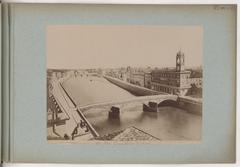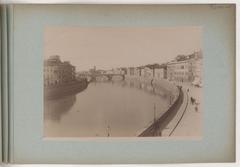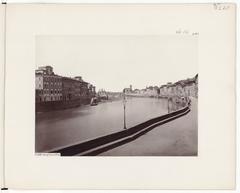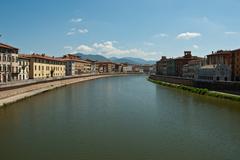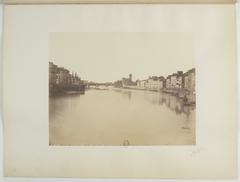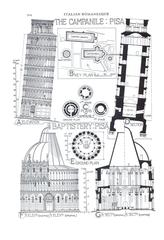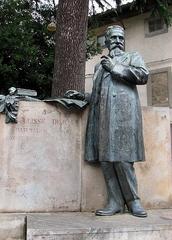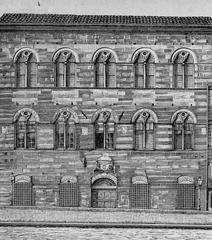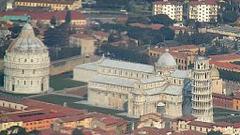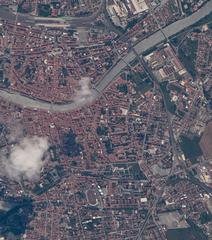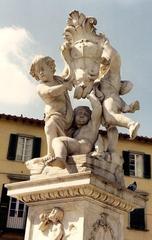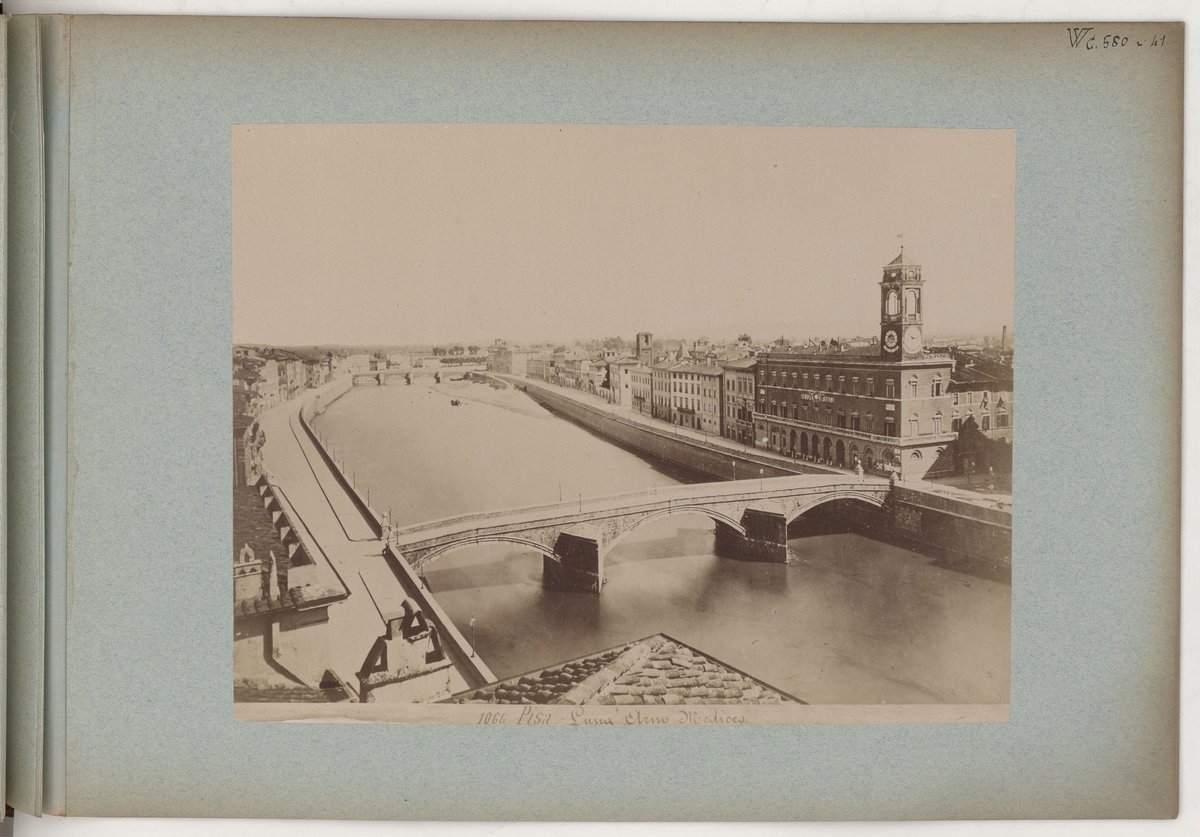
Visiting Lungarno in Pisa: Hours, Tickets, and Historical Insights
Date: 17/08/2024
Introduction
The Lungarno of Pisa, Italy, is more than just a scenic promenade along the Arno River; it is a vibrant tapestry woven with centuries of history, culture, and architectural splendor. Visitors to the Lungarno are treated to a rich blend of medieval commerce, dynamic architecture, and cultural landmarks that have played a pivotal role in shaping Pisa’s identity. During the medieval era, the Lungarno served as a bustling hub of commerce, attracting merchants and traders from across Europe and establishing Pisa as a significant maritime power (In Italy). Over time, the riverbanks evolved, with warehouses and shops giving way to elegant palaces and mansions, reflecting the city’s prosperity and cultural heritage.
The Lungarno is also home to several notable landmarks such as Palazzo Gambacorti and Torre Guelfa, which stand as testaments to Pisa’s medieval grandeur and strategic importance (In Italy). The area has inspired poets and writers, including Lord Byron and Percy Bysshe Shelley, who were captivated by its beauty and cultural significance (About Pisa). Despite modern reconstructions, the Lungarno has retained its historical charm and continues to be a vibrant part of Pisa’s cultural landscape (About Pisa).
Table of Contents
- Introduction
- Historical Background and Significance
- Notable Landmarks
- Cultural Significance
- Key Events and Festivals
- Architectural Highlights
- Museums and Cultural Institutions
- Practical Visitor Information
- Nearby Attractions
- FAQ
- Conclusion
Explore the Lungarni of Pisa: History, Landmarks, and Visitor Information
Introduction
The Lungarni of Pisa, the scenic promenades along the Arno River, are not just picturesque walkways but a gateway to the rich tapestry of Pisa’s history, culture, and architecture. This guide will delve into the historical significance, notable landmarks, key events, and practical visitor information to help you make the most of your visit to these iconic riverbanks.
Historical Background and Significance
Medieval Commerce and Social Hub
The Lungarni of Pisa have been central to the city’s history for centuries. During medieval times, these riverbanks were bustling hubs of commerce and social activity. Warehouses, shops, and markets lined the Lungarni, attracting merchants and traders from across Europe. This vibrant commercial activity was crucial to Pisa’s economy, establishing the city as a significant maritime power (In Italy).
Evolution of Architecture
Over time, the Lungarni underwent significant transformations. The warehouses and shops gradually gave way to elegant palaces and mansions as wealthy merchants and noble families sought to establish their residences along this prestigious waterfront. This architectural evolution is evident in the various styles and structures that adorn the Lungarni today, reflecting the city’s rich history and cultural heritage (In Italy).
Notable Landmarks
Palazzo Gambacorti
One of the most notable landmarks along the Lungarno Mediceo is the Palazzo Gambacorti. This imposing edifice, which once housed the city’s government, stands as a testament to Pisa’s medieval grandeur. Its timeworn facade, adorned with intricate carvings and elegant arches, transports visitors back in time, offering a glimpse into the city’s illustrious past (In Italy).
Torre Guelfa
Another significant landmark is the Torre Guelfa, a medieval tower that once served as a defensive outpost. Its sturdy structure has withstood the test of time, and visitors can climb to its summit for panoramic views of the city. This tower is a reminder of Pisa’s strategic importance and its role in regional defense during the medieval period (In Italy).
Cultural Significance
The Lungarni are not just historical landmarks; they are also cultural treasures. The elegant facades of the palaces along the Lungarno Mediceo, adorned with intricate carvings and decorative elements, tell the story of a city that once rivaled the likes of Venice and Genoa in maritime power and cultural flourishing (In Italy).
Literary Inspirations
The Lungarni have inspired many poets and writers over the centuries. English poets Lord Byron and Percy Bysshe Shelley, who lived along the Arno River in the early 19th century, praised the view and the cultural inspiration that the city offered. Byron famously described the sunset over the Lungarni as one of the most beautiful sights in the world (About Pisa).
Reconstruction and Modern Era
In 1871, the Lungarni underwent significant reconstruction, which sadly destroyed many of the characteristic stairs and flights of steps that were once a hallmark of the area. Despite this, the Lungarni have retained their historical charm and continue to be important nightlife meeting places for Pisans. The Lungarni’s blend of historical charm and contemporary vibrancy makes them a unique and essential part of Pisa’s cultural landscape (About Pisa).
Key Events and Festivals
Luminara di San Ranieri
One of the most spectacular events held along the Lungarni is the Luminara di San Ranieri. On the evening of June 16th, the eve of the feast day of Pisa’s patron saint, San Ranieri, the Lungarni are transformed into a magical spectacle. The splendid buildings along the riverbank are illuminated by 70,000 small lights and candles, creating a breathtaking display that attracts visitors from all over the world (Terre di Pisa).
Regatta of San Ranieri
Another significant event is the Regatta of San Ranieri, held on June 17th. This traditional boat race sees teams from the city’s four historical quarters—San Francesco, San Martino, Santa Maria, and Sant’Antonio—compete against each other on the Arno River. The regatta is a vibrant celebration of Pisa’s maritime heritage and a highlight of the city’s annual calendar (Terre di Pisa).
Architectural Highlights
Palazzo Agostini
Located on the Lungarno Pacinotti, Palazzo Agostini, also known as the Red Palace, is one of the most beautiful buildings along the Arno River. It has been home to the Coffee dell’Ussero since 1775 and the Cinema Lumière since 1899. The building’s facade, adorned with terracotta decorations, is a prime example of Gothic architecture in Tuscany (Terre di Pisa).
Palazzo Lanfreducci
Another architectural gem is Palazzo Lanfreducci, also known as the Palace Day. Commissioned by the Baptist Lanfreducci, a leading figure in the Pisani family, the palace was restored in the early 17th century. Its current appearance reflects the architectural styles of that period, with intricate decorations and a piece of chain above the main entrance, symbolizing the uncertainty of earthly life (Terre di Pisa).
Museums and Cultural Institutions
Museo di Palazzo Reale
The Lungarno Galilei is home to the Museo di Palazzo Reale, a former royal palace that now houses a remarkable collection of paintings, sculptures, and artifacts. The museum offers visitors a chance to admire masterpieces by renowned artists such as Giovanni di Nicola and Benozzo Gozzoli, and to delve into the fascinating history of Pisa and its ruling families (In Italy).
National Museum of San Matteo
Located on the Lungarno Mediceo, the National Museum of San Matteo houses an extensive collection of medieval and Renaissance art. The museum’s exhibits include paintings, sculptures, and ceramics, offering a comprehensive overview of Pisa’s artistic heritage (Terre di Pisa).
Practical Visitor Information
Visiting Hours
While the Lungarni themselves are open 24/7 for leisurely walks, the museums and cultural institutions have specific visiting hours. For instance, Museo di Palazzo Reale is open from 9 AM to 7 PM, Tuesday to Sunday. Make sure to check the official websites for the most up-to-date visiting hours.
Tickets and Entry Fees
Many of the landmarks and museums along the Lungarni require an entry ticket. Prices generally range from 5 to 10 Euros, with discounts available for students and seniors. Combo tickets are also available for multiple attractions.
Travel Tips
Pisa is well-connected by train and bus, and the Lungarni are within walking distance from the Pisa Centrale train station. Wear comfortable shoes as the best way to explore the Lungarni is by foot.
Accessibility
Most of the Lungarni are accessible to visitors with mobility issues, but some historic buildings may have limited access. It is advisable to check in advance.
Nearby Attractions
Piazza dei Miracoli
Just a short walk from the Lungarni, the Piazza dei Miracoli is home to the famous Leaning Tower of Pisa, the Cathedral of Santa Maria Assunta, and the Baptistery. This UNESCO World Heritage site is a must-visit.
Botanical Garden of Pisa
Established in the 16th century, the Botanical Garden of Pisa offers a peaceful retreat with a wide variety of plants and trees. It is located close to the Lungarni and provides a perfect escape from the bustling city.
FAQ
Q: What are the visiting hours for Lungarni Pisa?
A: The Lungarni are open 24/7, but individual landmarks and museums have specific visiting hours. Check their official websites for the latest information.
Q: Are there guided tours available for Lungarni Pisa?
A: Yes, several companies offer guided tours that cover the historical and cultural significance of the Lungarni. These tours often include visits to major landmarks and museums.
Q: How much do tickets cost for Lungarni Pisa attractions?
A: Ticket prices generally range from 5 to 10 Euros, with discounts available for students, seniors, and combo tickets for multiple attractions.
Conclusion
The Lungarni of Pisa are more than just scenic promenades; they are living testaments to the city’s rich history and cultural significance. From their medieval origins as bustling commercial hubs to their modern-day role as vibrant cultural centers, the Lungarni offer visitors a unique and immersive experience. Whether you’re exploring the architectural wonders, participating in traditional festivals, or simply enjoying a leisurely stroll along the river, the Lungarni promise an unforgettable journey through the heart of Pisa (Love From Tuscany).
Call to Action
If you enjoyed this guide, don’t forget to check out our other articles on Pisa’s historical sites and download the Audiala mobile app for more travel tips and updates. Follow us on social media to stay informed about upcoming events and new attractions.
